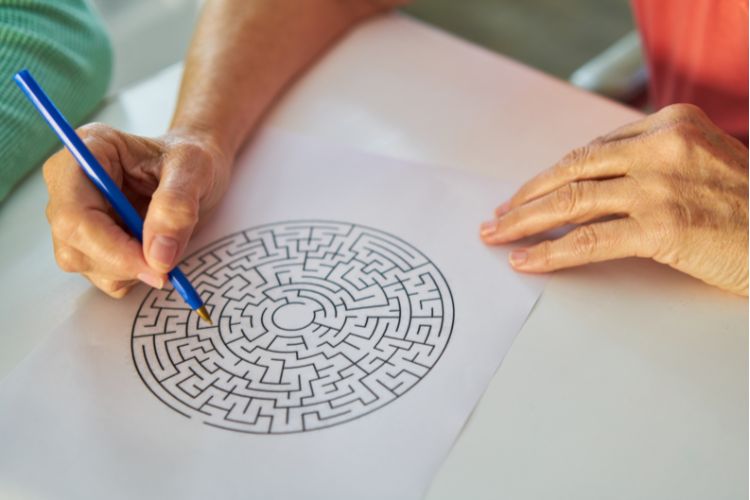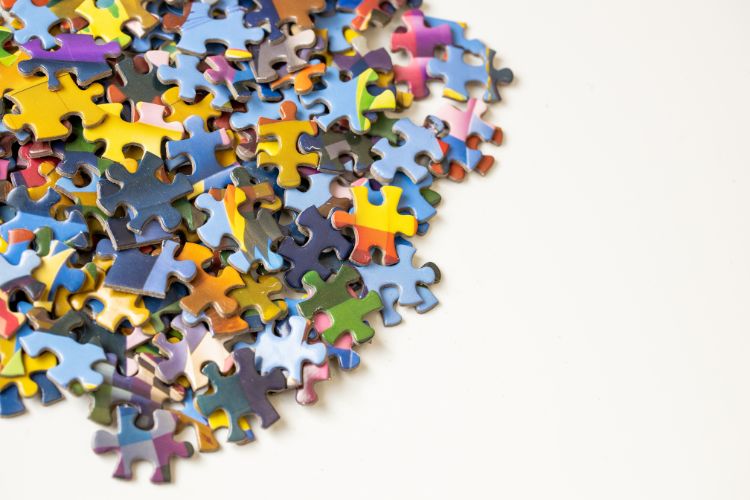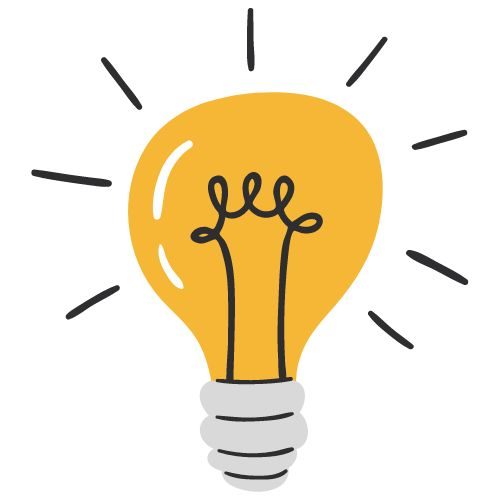We’ve all been there—staring at a puzzle for hours and feeling like you’ve hit a wall. The good news? With the right strategies, no puzzle is too tough to crack.
Ready to flex those mental muscles? Here are 10 puzzle solving tips to help you tackle even the toughest brain teasers.
1. Break It Down
Start by breaking puzzles into smaller chunks and understand each piece individually. Every word or detail can hold significance, so don’t rush! Then, picture how the different parts might connect.
2. Identify Patterns
Many puzzles rely on patterns, whether in numbers, shapes, or words. The more you practice, the quicker you’ll spot these.
Math puzzles, in particular, are based on sequences, symmetry, or other special sequences like the Fibonacci series. You can also translate math problems into equations or use diagrams to visualize details.
3. Look for Clues and Red Herrings
Puzzles offer clues—some are clear, others hidden within the data or wording. Be cautious: not all clues are meaningful, but a well-crafted puzzle will either provide helpful hints or clever distractions.

For riddles, keep an eye out for words with synonyms or double meanings and try to find the connection individually.
Many riddles also play with words similar to the answer, so it’s a good idea to brainstorm related words or phrases.
Occasionally, a puzzle might throw in a red herring—false clues that serve only to confuse or mislead. If something seems to stand out but doesný fit logically with the rest of the information, that could be a red herring.
4. Use a Grid
Set up a grid for puzzles with categories like people or objects that need to be matched or ordered. But before you start tabulating, list items for each category from all the available data.
Next, create rows and columns and use the clues to populate the grid. Start with the most obvious matches and reread problems to uncover information hiding in plain sight.
Most clues with indirect details give you a few bits of info at once. Use the process of elimination to narrow down possibilities.
Also, look for subtle hints, like gender pronouns or time-related clues. Return to your grid regularly and fill in the gaps as you gather more insights.
If stuck, try making an educated guess and see if it leads to a solution or contradiction. Copy the grid and experiment with other combinations without losing your progress.
Lastly, check your final answer against the original clues to see if everything aligns. If there’s a mistake, it’s best to restart the puzzle.
5. Ask the Right Questions
A great approach to problem-solving is asking clear, targeted questions. Is this a trick question? What are you missing? What assumptions are you making? Asking yourself these questions helps clarify what you need to focus on.
6. Think Laterally

You know how sometimes the answer seems pretty obvious? Well, that’s almost always a trap!
Try approaching the problem from a different POV. Explore different possibilities, reason out the problem, and eliminate options that can’t be correct. But be careful not to ditch a path too quickly, though—you don’t want to rule out the right solution.
Be open to creative or unconventional solutions. Trust us—some of the best “aha!” moments come from the most out-there ideas.
7. Work Backwards
Try solving the problem in reverse if you can’t find a solution. Start with the answer or the goal and see how you could logically arrive at it. This technique helps, especially when tackling tricky math puzzles where the solution seems out of reach.
8. Take a Break and Keep Trying
We’ve all had our fair share of “stumpers”—puzzles that seem impossible to crack. No need to beat yourself up; step away and take a breather.
Or, sleep on it and return later with fresh eyes. Sometimes, the right answer just pops up when you’re not even trying.
9. Learn From Your Mistakes
Each puzzle or riddle you fail to solve teaches you something, so reflect on what went wrong. Did you misinterpret a clue? Maybe missed a key detail?
Analyze your thought process and identify areas of improvement. Treat every mistake as an opportunity to become a better puzzle solver.
10. Learn From Others

Studying solved puzzles can be super helpful, particularly when the solver explains their reasoning. Reviewing their logic will give you insight into strategies you might not have considered before.
So, read solutions, watch tutorials, and discuss puzzles with fellow enthusiasts. You can even keep a journal to record new methods you discover along the way.
11. Keep at It (But Have Fun!)
Remember, your brain is like a muscle—the more you exercise it, the stronger it gets! So, keep practicing. Take on a rebus with your morning coffee, and wind down with a Sudoku before bed.
Challenge yourself with new brain teasers, but don’t forget to enjoy the process. If it stops being fun, then what’s the point?
Wrapping Up
So, there you have it—puzzle solving tips to help enhance your skills and make the process more enjoyable. Now, go forth and conquer those puzzles!
